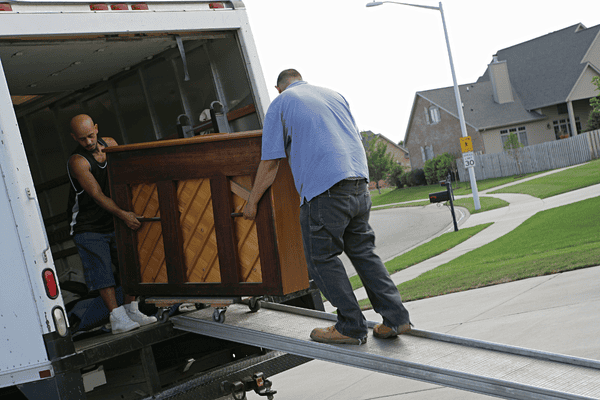How to Move a Piano Safely: A Step-by-Step Guide for Upright Piano Owners
Moving a piano—especially an upright piano—is no easy feat. It’s not just a large and heavy instrument; it’s also delicate, valuable, and vulnerable to damage if handled the wrong way. Whether you’re planning to move a piano across the room or into a new home, knowing how to do it correctly can save you from injuries, dents, and costly repairs.
This in-depth guide teaches you the safest and most effective way to move a piano, with expert advice, step-by-step instructions, and essential tools like dollies, moving blankets, and straps. If you’re about to move an upright piano, this article is worth your time. It will help you move your piano without compromising its condition—or your safety.
What Should You Know Before You Move a Piano?
Before you move a piano, it’s important to understand what you’re dealing with. A standard upright piano weighs anywhere between 300 to 500 pounds, while a grand piano or baby grand can weigh more than 1,000 pounds. This kind of weight makes it essential to plan carefully, measure doorways, and have enough people to help with the moving process.
You should also evaluate the moving path. Are there doorways and hallways, a staircase, or tight spaces along the route? Any obstacle can make the process more complicated. To avoid injury or damage, take your time and clear the moving route of furniture or clutter.
If you’re not confident, consider professional piano movers. They come equipped with special equipment and experience to transport your piano safely.
What Equipment Do You Need to Move a Piano?
You’ll need the right equipment to move a piano safely. Start with a 4-wheel dolly or a sturdy dolly that can support the weight of the piano. A piano board—a flat platform often used with grand pianos—can also be helpful, though it’s not always necessary for upright pianos.
Here’s a checklist of essential tools:
- Heavy-duty dolly
- Moving blankets to protect surfaces
- Straps or bungee cords to secure the piano
- Bubble wrap for added protection
- Ramp (especially if using a moving truck)
- Gloves with grip
Make sure you wrap the piano fully in moving blankets, focusing on the corners and the base of the piano, to prevent damage. The right tools and padding can make all the difference when it comes to piano moving.

How Many People Do You Need to Move a Piano?

Moving a piano is not a one-person job. You’ll need enough people—usually at least three or four strong helpers—to lift the piano, guide it onto the dolly, and carry the piano through doorways and into the moving truck.
Team coordination is essential. Designate one helper to guide and another to secure the piano as it moves. This is especially critical when navigating through narrow hallways or down a staircase. A properly organized moving team will not only safely move the piano but also prevent scratches or dents along the way.
How Do You Wrap and Protect the Piano?
To move a piano safely, start by wrapping the piano in thick moving blankets. Cover every surface, including the legs, top, sides, and back. Use bubble wrap for areas with hardware or pedals. Then use straps or bungee cords to hold the padding firmly in place.
If you’re moving an upright piano, make sure the keyboard lid is closed and secured. You don’t want it opening mid-move and causing damage. Avoid taping directly onto the piano‘s surface to prevent any finish damage—secure the blankets around the piano with the straps instead.
Wrapping the piano in moving blankets is one of the most effective ways to prevent damage during loading, transport, and unloading.
How Do You Lift and Place the Piano onto a Dolly?
Lifting must be done slowly and carefully. Don’t rush or jerk the piano—it’s too heavy and fragile for that. To lift the piano onto the dolly, get your helpers on each side. Grip from the base of the piano and lift together using your legs, not your back.
Once lifted, guide the piano to the dolly, making sure it sits evenly. Use moving straps to secure the piano tightly onto the dolly. If you’re moving over uneven surfaces or thresholds, take your time. Never attempt to push the piano over steps without a ramp or lifting assistance.
Whether you’re using a piano board or directly placing the piano onto the dolly, make sure everything is tight and secure before proceeding.

How Do You Move a Piano Through Doorways and Hallways?
This is where careful planning matters most. First, measure doorways and make sure there’s enough clearance for the piano to pass. Remove doors from hinges if necessary to widen the opening. Watch out for wall corners, thresholds, and tight spaces that could scuff or dent the piano.
As you guide the piano, have one helper lead the way while others manage the dolly and straps. If turning is required, move the piano at a slight angle to navigate through the hallway or turn. Always keep the weight balanced and communicate with your team.
Every doorway and hallway presents a risk, so go slowly and carefully. A single bump can result in damage to the piano or your walls.
How Do You Load the Piano onto a Moving Truck?
When it’s time to load the piano, position the moving truck so that the ramp or lift is as level as possible. Use a ramp to wheel the dolly and secure the piano onto the truck.
Inside the truck, place the piano against a side wall to keep it stable. Use bungee cords, moving straps, or other fasteners to secure the piano to the truck walls. Cushion the area around it with moving blankets or extra boxes to prevent damage during transport.
Avoid stacking anything onto the piano. It should stand upright and undisturbed during transit. The goal is to minimize shift and vibration while on the road.
How Do You Move an Upright Piano Upstairs or Downstairs?
To move an upright piano on stairs, you need to use extreme caution. This is one of the most dangerous parts of any piano move. Use a heavy-duty dolly, strong straps, and a ramp if available. Have at least two people to help at the base, lifting and supporting the weight, and another helper at the top to guide.
Take it one step at a time. Communicate clearly and take your time. This is not a rush job—rushing could result in damage to the piano, injury, or both. If the stairs are narrow or steep, call in professional piano movers who have experience with such moves.
Moving stairs without assistance is never recommended—especially when you move a piano without proper training or gear.
Should You Disassemble the Piano Before Moving?
In most cases, especially for upright pianos, full disassembly isn’t necessary. However, you can remove certain parts like the music stand, pedals, or legs to make the piano easier to handle.
If you do remove parts, wrap them in bubble wrap and label them. Store them in a secure box and keep it with your main gear to reassemble the piano later. Any disassembly should be done carefully to avoid damaging internal components.
Only attempt this step if you’re familiar with how the parts come off—or consult with a professional piano technician beforehand.
Should You Hire Professional Movers for Your Piano?
If you’re uncertain at any point—or if your piano is especially valuable—it’s smart to hire professional piano movers or moving companies that offer this specialty. They have the right equipment, know how to handle the weight, and understand the risk of potential damage.
You may wonder, how much does a piano move cost? The price depends on the size of the piano, the distance of the move, and any complications like stairs or long routes. While it might seem costly, it’s often cheaper than repairing a damaged instrument—or worse, replacing it.
When in doubt, investing in professional movers ensures peace of mind and protects your prized possession.
Final Checklist: How to Move a Piano Like a Pro
- Always plan ahead and clear the moving path of any obstacles.
- Use a dolly, straps, bubble wrap, and moving blankets to prevent damage.
- Have enough people—at least three or four helpers—to assist.
- Measure doorways and hallways to ensure enough clearance.
- Never lift your piano without help or the right equipment.
- Use bungee cords and straps to secure the piano during transport.
- Take extra precautions when using stairs or tight spaces.
- Consider disassembly only if you’re confident or have expert guidance.
- Don’t stack anything onto the piano during the move.
- When in doubt, hire experienced professional piano movers to do the job safely.
With these tips, you now know how to move a piano safely—whether it’s across the room or to a whole new home. Take it slow, plan smart, and protect your instrument at every step.

